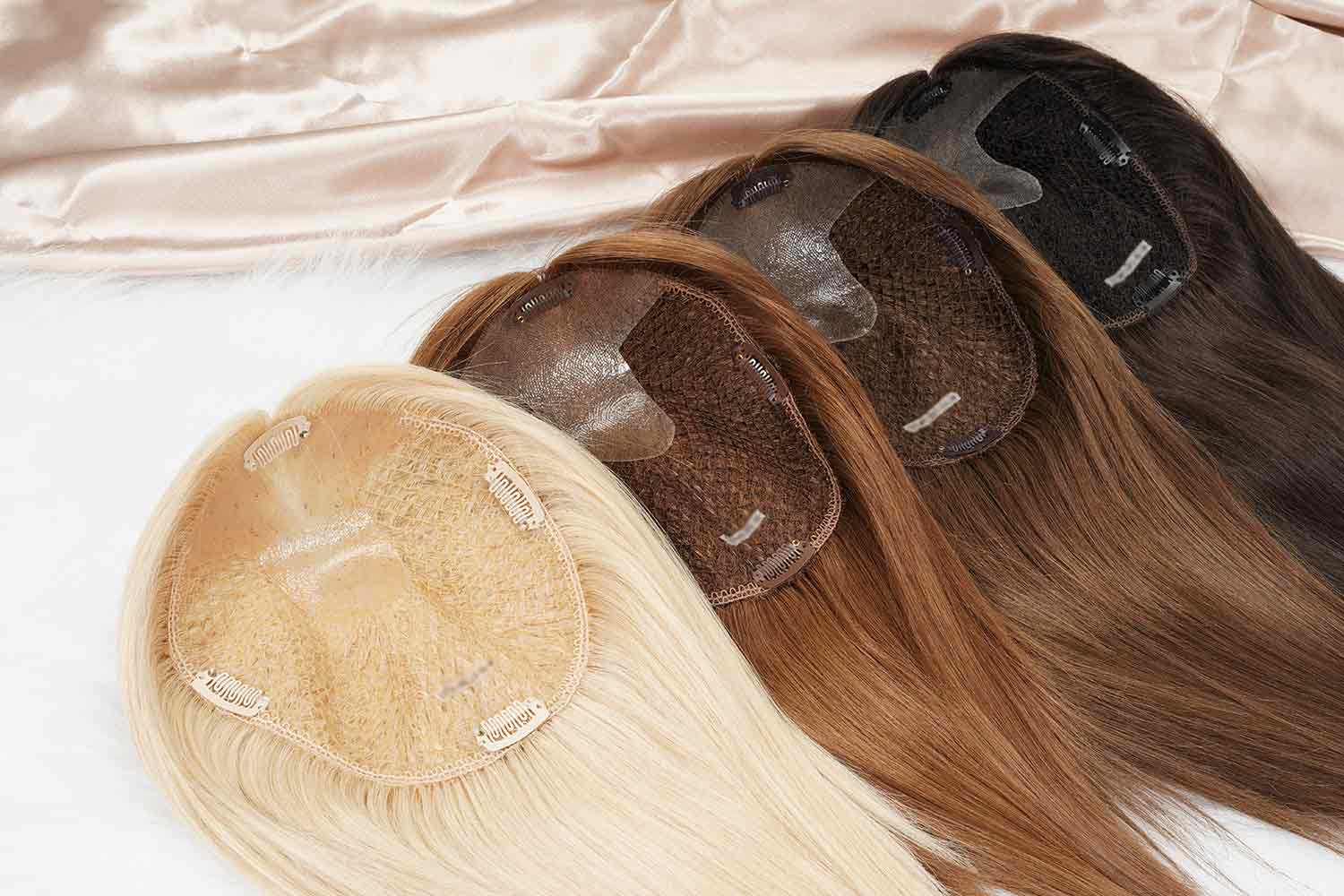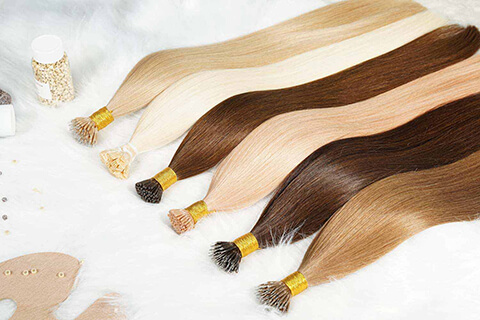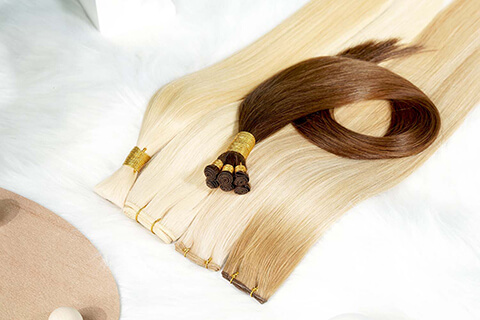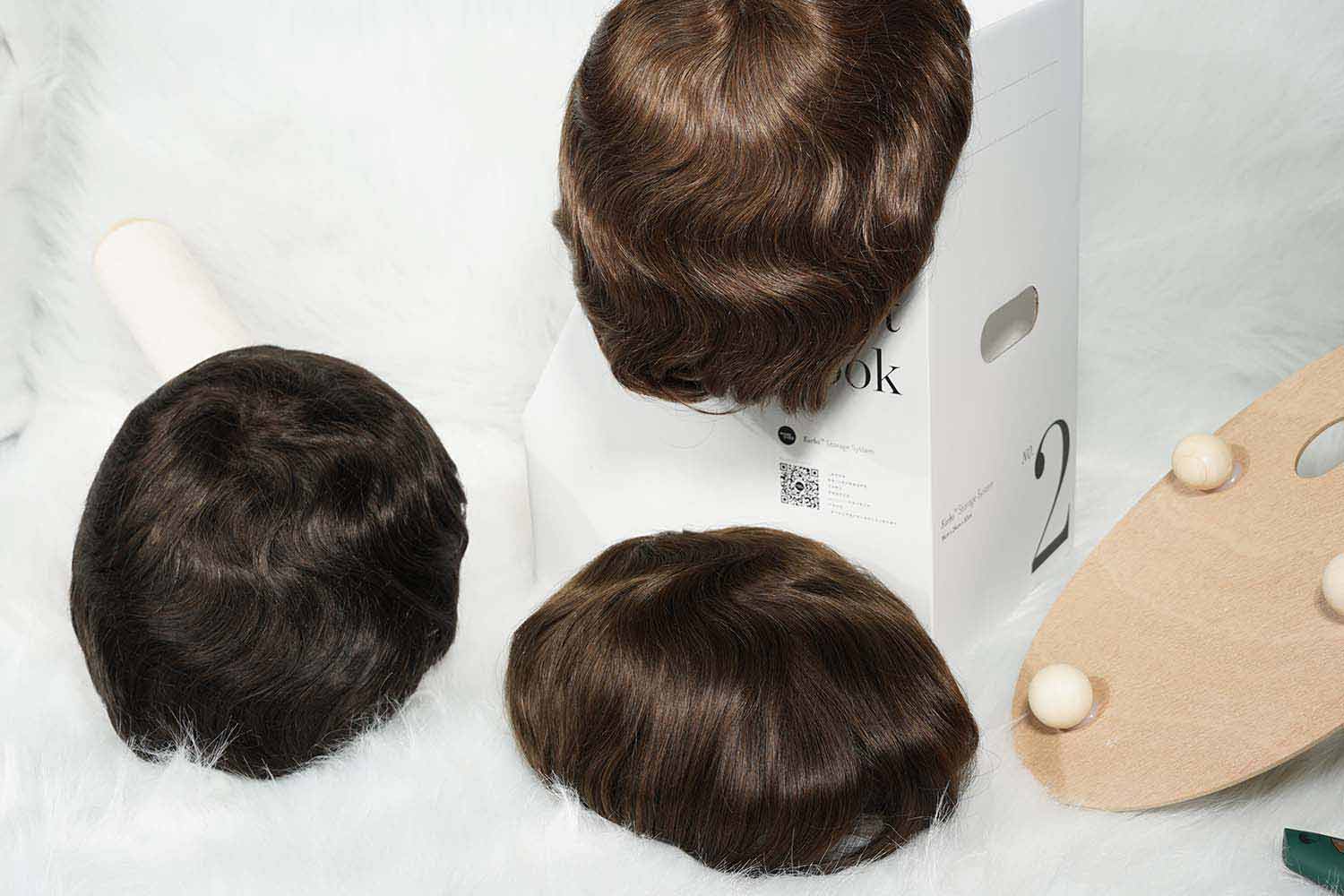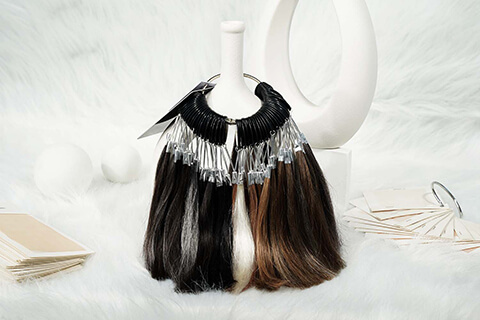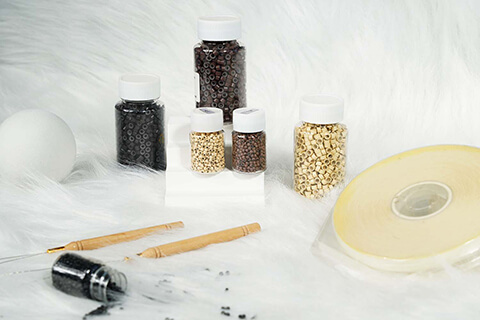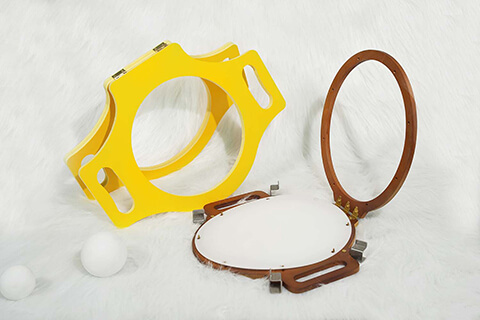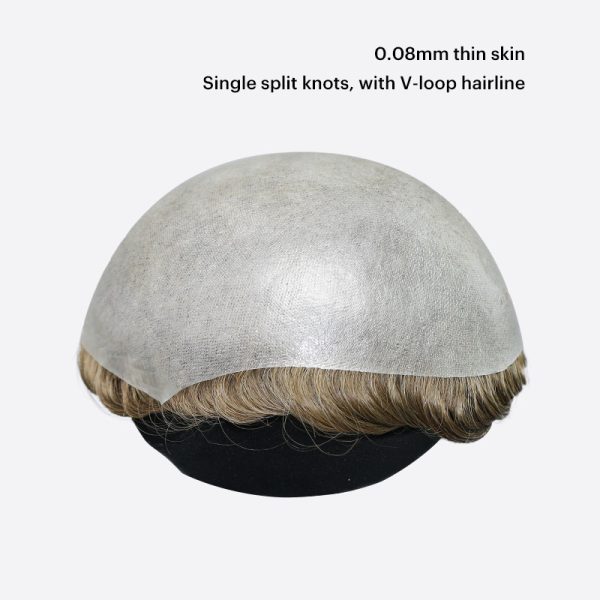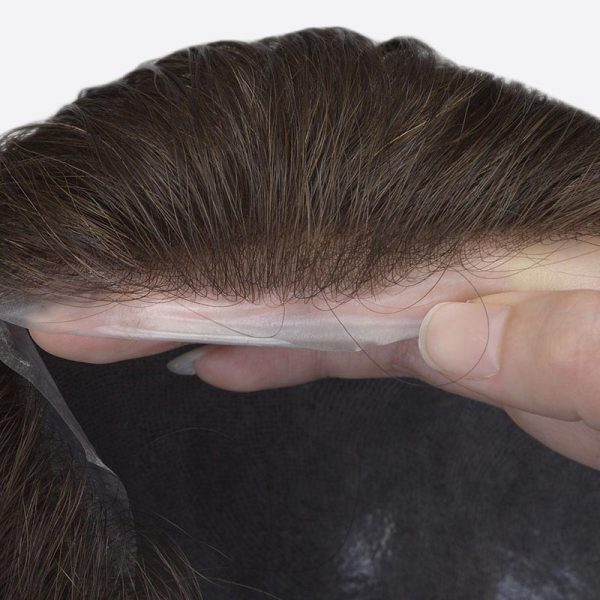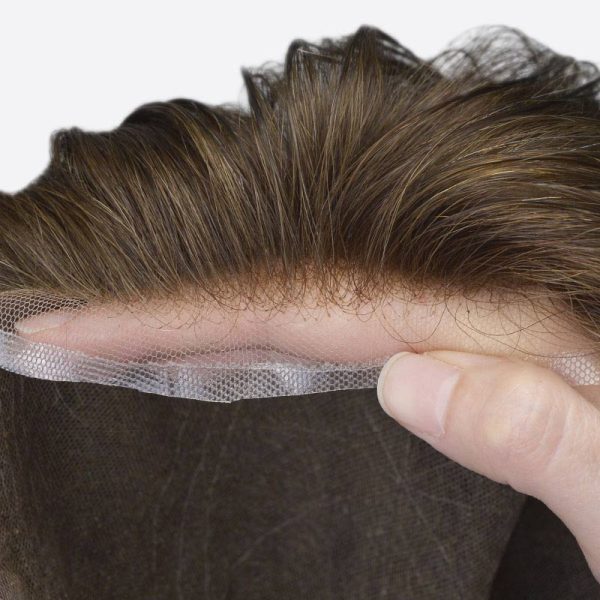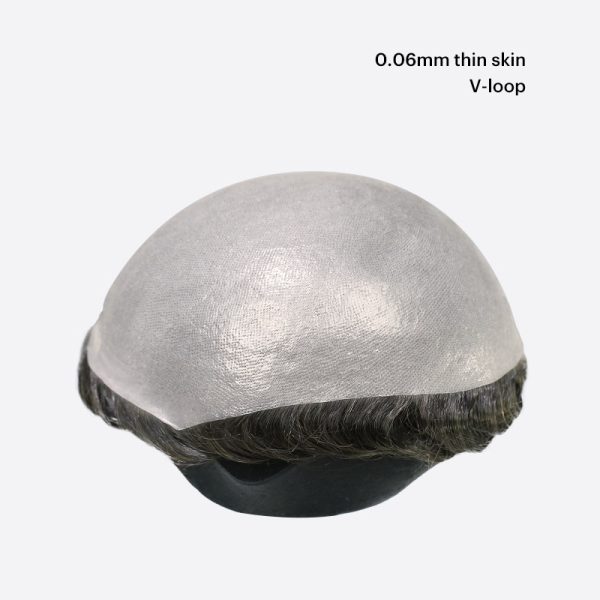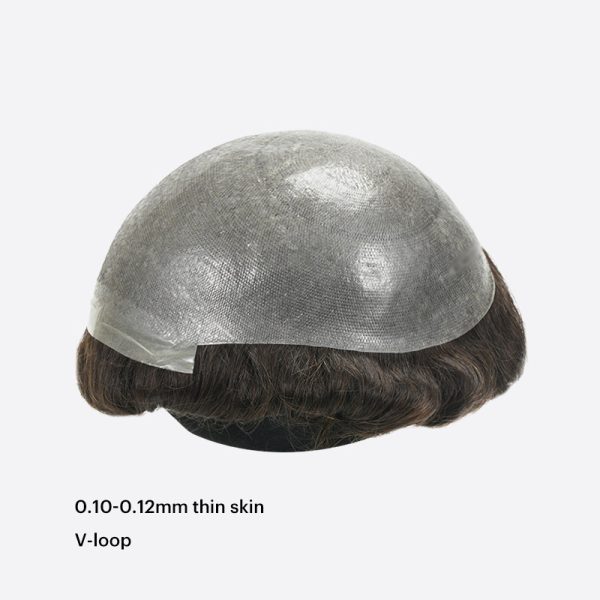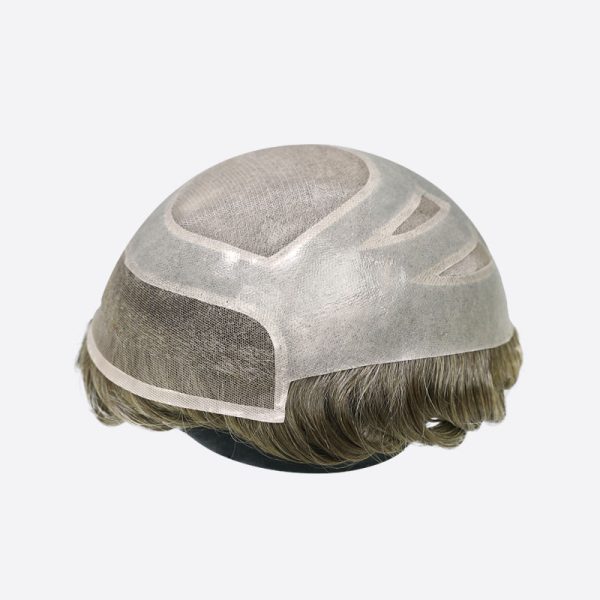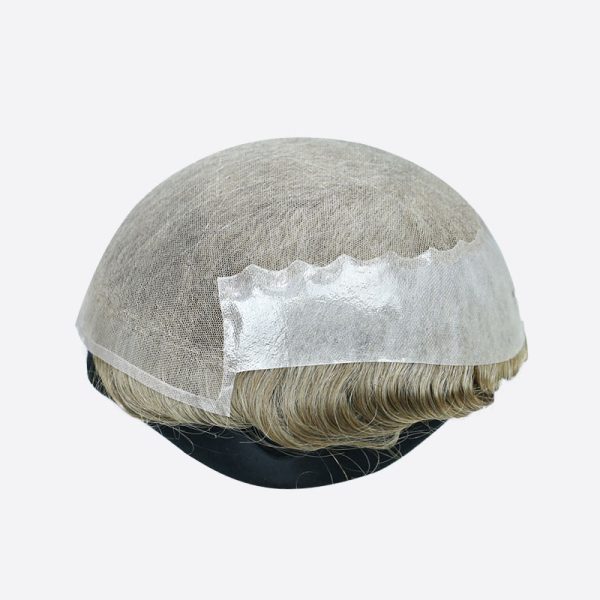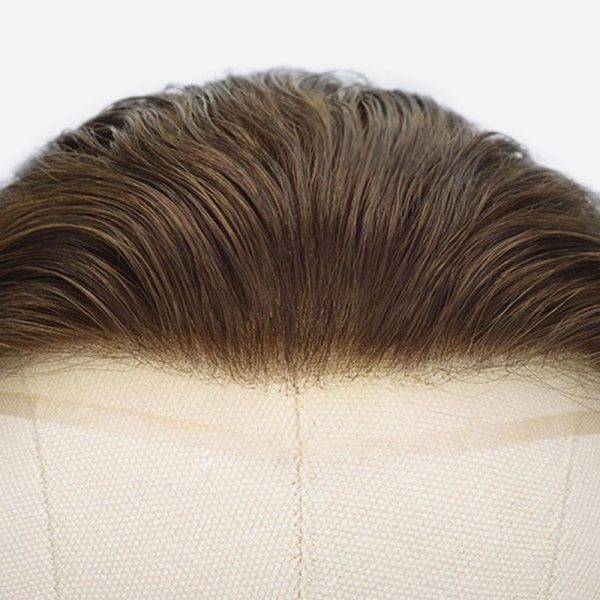Introduction
Hair plays a significant role in defining an individual self-image. It is a visual representation of how we want to be viewed by the world. Men have scheduled weekly visits at the barbers to ensure they are well-groomed, others dye their hair very bright so they can be seen, and when the hair does not look right, they cover up with a hat. We take pride in our hair and no one wants to lose hair. Losing hair and going bald has been linked to causing high social anxiety, decreasing one’s self-esteem, and causing depression.
One of the worst experiences about going bald especially at a young age is everyone sees it and most people point it out. Our hair plays a huge part in how one is viewed as attractive. If you are experiencing balding, you are not alone. Over 100 million men and women worldwide are experiencing hair loss and balding. One out of every five men will lose a significant amount of hair in their lifetime.
Balding and hair loss can be caused by:
- Genetics- The most common cause of hair loss is androgenic alopecia, also known as male pattern hair baldness. It is hereditary hair loss that causes the follicles to shrink.
- Alopecia areata – This is caused when the body’s immune system attacks the hair follicles, which then causes hair loss. This can be induced by stress.
- Medical condition- People with conditions such as scalp cancer, thyroid disease, psoriasis will experience hair loss.
- Effects of chemotherapy- Used to treat cancer, chemotherapy and radiation treatments can cause the hair to fall off.
- Aging- With age, it is normal for hair growth to slow down. The hair follicles stop growing, which will cause the hair to thin out.
- Supplement deficiency – Lack of essential nutrients in your body such as iron, zinc, or Vitamin B 12 can cause your hair to shed excessively and thin out.
- Scalp infection or scalp damage- Irritated scalp or inflamed scalp can develop bald spots.
- Hormonal imbalance- overproduction of the hormone Dihydrotestosterone(DHT), which is a leading cause of hair pattern baldness.
- Hair routine- Being rough with your hair, failing to take care of it, and being roughly combing it can lead to hair loss.
- Medication- Some medications can cause hair loss. For health reasons, you cannot stop taking the medication.
- Pulling your hair out – This is more common than you think. People tend to pull out their hair when stressed, and this can damage the hair follicles and leave you with bald spots.
These are the top reasons for experiencing hair loss but other factors may cause hair loss.
Hair loss and balding can be determined by :
- Your hair has stopped growing and needs treatment to regrow.
- The hair keeps falling out in large chunks, gradually or suddenly. When you comb your hair, a lot of shed hair is left on the comb.
- The hair is thinning out. The overall volume of your hair has decreased.
- You are no longer seeing new growth come in and you need some form of treatment to grow your hair.
- You are slowly getting a receding hairline.
- You have bad spots at the temple or in different areas around the scalp.
Trichologists and dermatologists have reported a high increase in hair loss recently. In 2000-2021 a lot of us are experiencing hair thinning due to the current high-stress levels caused by the ongoing pandemic. Losing hair is a very distressing experience and it does not matter how old or young you are. You will be affected by balding. Hair loss can be temporary or permanent. When you are experiencing a large amount of hair loss and the hair is refusing to grow back, the best thing is to find a solution to help you grow your hair back to once full thickness.
There are two main ways to regrow hair:
- Surgical Hair Restoration (Hair transplant)
- Non-Surgical Hair Restoration
Hair transplant is an invasive cosmetic surgery that helps treat baldness. For some, they may want a hair transplant but they may feel it is too extreme especially when you take into account its strong disadvantage. These disadvantages include;
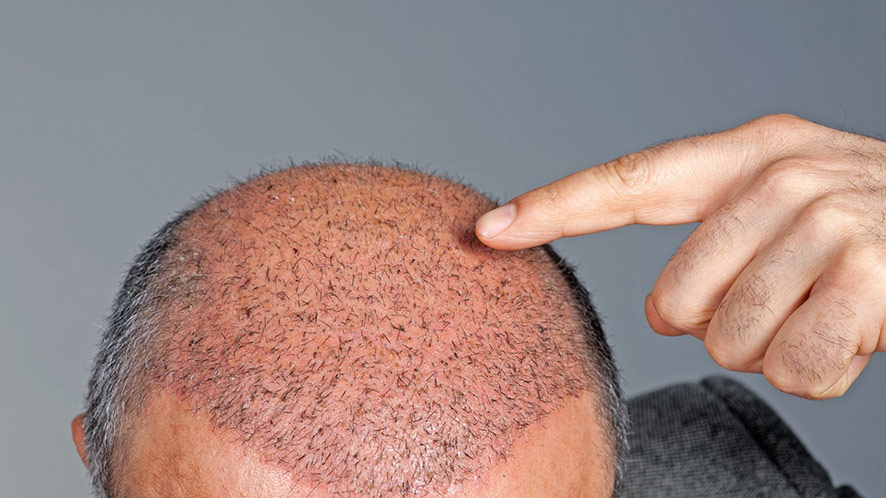
- It is expensive. Without the guarantee of access, a hair transplant will cost you $500- $25,000 depending on where you get it done.
- It is a very time-consuming procedure with a long recovery time post-surgery.
- It is too invasive. You did not imagine your practical hair solution is having to get surgery.
- Like all surgeries, it is a risky option.
- If the hair follicles are not well implanted, it might result in a permanent unnatural-looking appearance.
- The effectiveness of a successful hair transplant procedure solely relies on the person having viable hair follicles.
- Severe scarring, nerve damage, and other surgery complications are a possibility.
- You will have a scar. It is unavoidable and you will have to go through a period of major insecurity from both the balding and scarring as you wait for healing and regrowth of hair.
- Hair loss might continue well after the hair transplant procedure.
With continuous research and improvement in modern medicine and a combination of technology, some treatments do not involve surgery. The high-risk adverse effects one might have with a hair transplant are undesirable, making non-surgical hair restoration options an alternative, sophisticated solution. In this article, we want to take a deep dive and explore the world of non-surgical hair restoration.
What is Non-Surgical Hair Restoration?
Non-surgical hair restoration is a combination of non-invasive techniques to treat the cause of hair loss and encourage hair growth resulting in healthy, thicker hair.
How Does Non-Surgical Hair Restoration Work?
One of the most significant advantages of the non-surgical hair restoration method is its purpose of targeting the core reason for the hair loss and potentially stopping it. Targeting the reason for balding can be done by understanding follicles and hair growth. When it comes to hair growth, it is extremely complicated. Hair growth begins underneath the surface of the scalp. The scalp protects the follicles, which contain active cells responsible for hair growth. It is imperative for one to have healthy and active hair follicles to ascertain that the hair is growing. When the follicles are damaged or dormant, no new hair grows. Each of our hair strands goes through 4 stages of the growth cycle at any given time.
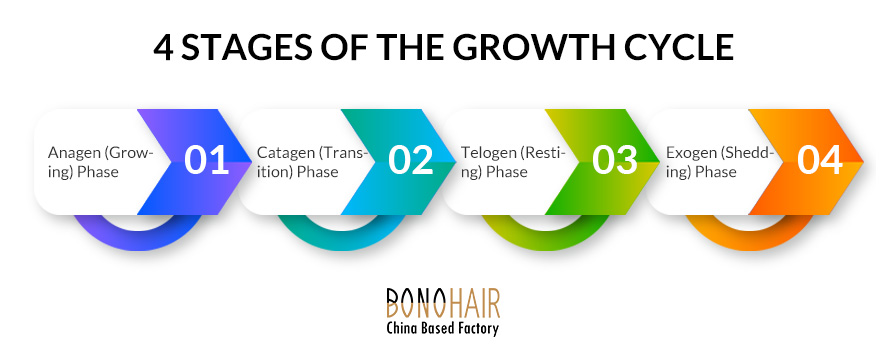
- Anagen (Growing) Phase – This is also known as the active phase and can last around 2-7years. In this phase, hair can grow 16 to 30 inches long. 90% of the hair on the scalp is at anagen phase. The active cells in the follicles are rapidly dividing, creating new hair growth. One can have a short active phase. To avoid hair loss, one wants to stay in the anagen phase.
- Catagen (Transition) Phase- 5% of your how is at catagen phase and it can last 2 to 4 weeks. The hair follicles shrink up and detach from the hair follicles to attach to the root of the hair.
- Telogen (Resting) Phase -15% of the hair is at telogen. It lasts around 3 to 4 months. Hair follicles are completely resting as new hair begins to grow.
- Exogen (Shedding) Phase- Hair shedding is a natural process. We shed 50 – 100 strands a day. As old hair sheds, new hair continues its growth process.
When follicles are damaged, weak, or dormant, the hair stays between the telogen and exogen phases for longer periods of time. Gradually the anagen phase is eliminated. This is what eventually leads to balding. Non-surgical hair restoration methods work on treating and healing the follicles, stimulating new growth, and letting the hair remain in the anagen phase for longer.
What Are The Benefits Of Non- Surgical Hair Restoration?

- Treatment has no pain to very minimal pain.
- It is more affordable in comparison to hair transplants that will cost you possibly up to 10 times more.
- There is no downtime. Once you leave the clinic or treatment facility, you can go back to your normal routine.
- It helps with balding and recovering from a receding hairline thereby boosting one’s self-confidence.
- It is a great option for anyone experiencing any level of hair loss.
- Results are much quicker than a hair transplant. In 3 months one starts to see progress.
- It is not dependent on the donor’s hair for treatment.
- It is ideal for mild hair thinning. Instead of staying feeling insecure with your little to moderate hair thinning, you can opt for non-surgical hair restoration options. You do not have to wait for the hair balding to get to an extreme level and your only option is having to get a hair transplant.
- There is little to no risk from choosing a non-surgical hair restoration option.
- All non-surgical hair restoration methods for men are non-invasive. Therefore, there will be no scarring.
- There is no preparation needed for a non – surgical hair restoration treatment.
- There is minimal maintenance involved. No need for extra caution or special hair shampoo and conditioner to take care of the hair.
- It feels like a heavy burden lifted off. With hair regrowing after months or even years of suffering, finally seeing new hair growth may feel like a miracle to most.
Who Is An Ideal Candidate For Non- Surgical Hair Restoration Methods?
- People are suffering from any form of alopecia.
- People who lack donor hair for a surgeon to use during a hair transplant.
- Perfect for cancer patients who have unfortunately lost their hair during chemotherapy and are having a hard time regrowing their hair due to the effects of the medicine.
- Works for anyone experiencing hair loss.
- People who are prone to keloid scars after surgical operations.
What Are The Non-Surgical Hair Restoration Options?
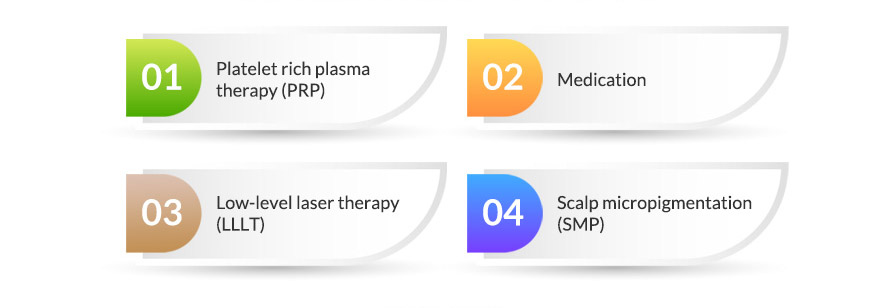
It is crucial to find what non-surgical hair restoration methods work best for your hair loss problems. You can also choose to combine multiple treatments under the approval and supervision of your doctor. The 4 most popular non-surgical hair restoration options are:
- Platelet rich plasma therapy (PRP)
- Medication
- Low-level laser therapy (LLLT)
- Scalp micropigmentation (SMP)
Platelet Rich Plasma Therary
Blood is extremely important for our body’s survival. Blood is responsible for the distribution of essential nutrients and oxygen throughout the body. It contains mesenchymal stem cells and autologous blood products containing essential nutrients and special cells (growth factors) that will help heal tissue regeneration and growth. When it comes to non-surgical hair restoration options, platelet rich plasma is the most popular widely used treatment as an innovative and safe way to treat hair loss and encourage hair growth. Trichologists recommend men experiencing balding tryout platelet rich plasma before they give the go-ahead for a hair transplant. Before plasma rich platelets, to help slow down the process of balding and treat hair loss, one had two options. That is hair transplant or medication prescribed by doctors. Two very varying extreme options with no in-between. Many of the risky side effects deterred men from either due to complexities. With time PRP has become the number one preferred option for effective non-surgical hair restoration methods.
The first use of plasma rich platelet therapy treatment in medicine dates back to 2005 in Europe. PRP treatment is used to;
- To promote wound healing in plastic cosmetic surgeries by increasing the healing process of clots.
- Orthopedics in sports medicine treats injured ligaments, muscles, tendons, and joints.
- To help stimulate the production of collagen, which significantly improves the appearance of one’s face as it tightens the skin.
Trichologists began using plasma rich platelets therapy as a non-surgical hair restoration method to treat hair loss when they realized it could increase the thickness of an individual’s hair strands, reverse hair loss, and see new growth in bald spots.
Why is PRP therapy so successful? PRP therapy’s main function in hair restoration is to stimulate actively newly implanted follicles into an active anagen (growing) phase.
Plasma rich platelets contain special cells called platelets that are meant to activate the hair follicles by stimulating the stem cells and other cells that may be dormant in the microenvironment of the hair follicles. Platelets are three times more concentrated than normal blood cells. Many intracellular structures like alpha granules, lysosomes, and glycogen lie in the platelets. The alpha granules contain clotting agents that are eventually released during the healing and repair process. Platelets contain growth factors, a special protein that will help the follicles heal, respond to injury, tissue regeneration, and finally form new cellular growth. PRP therapy can awaken dormant follicles by using the growth factors and cytokines in blood to stimulate cells and promote hair growth.
How does PRP Therary Work
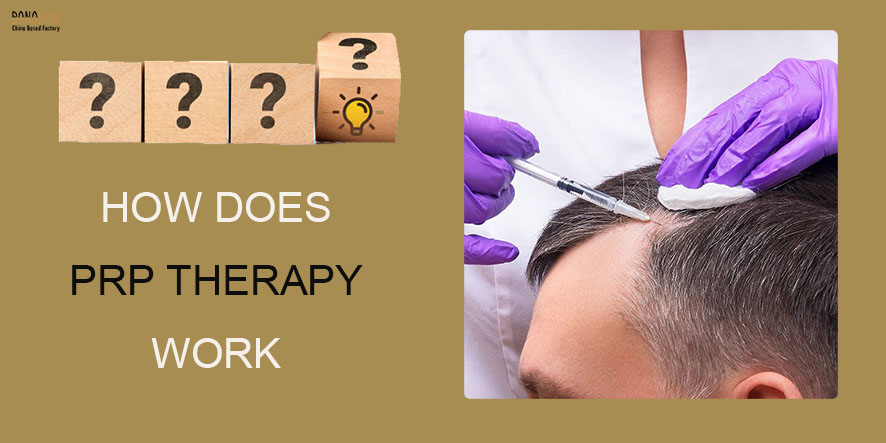
PRP therapy is performed by a trichologist, dermatologist, or technician. It is a non-invasive non-surgical hair restoration treatment that has no downtime.
- The doctor will draw out some blood from your arm. Blood extraction is necessary for each session.
- The blood is then spun in a machine known as the It is a machine that spins the blood at a high speed to separate the red blood cells from the plasma. Plasma is the liquid part of your blood. The blood is separated into 3 layers; platelet rich plasma, platelet poor plasma, and red blood cells. The centrifuge takes half an hour to isolate the plasma rich platelet.
- The doctor then injects the platelet rich plasma into the area of the scalp one is experiencing balding and hair loss.
The whole process is very quick with the treatment application taking 15 minutes. In every session, doctors administer about 15 to 20 injections per session. The thought of being injected by a needle on your scalp might get you worried, however, PRP is a painless, non-surgical hair restoration method. During the treatment, you might feel very little pressure, tightness, or slight discomfort. This does not last for long, probably lasts less than half an hour. As soon as you leave the treatment office you will be back to your normal self.
PRP does not deliver results immediately. With a lot of patients, with the first results, they start to notice a decrease in shed hair. You should not expect a head full of hair within a week! PRP treatments are performed 3 to 4 months with 3 sessions yearly. As you continue to use the treatment there will be a gradual improvement. It may take 3 months to see any visible results. To maintain the results one must return for a follow-up treatment every 6 to 12 months. Future treatments highly depend on;
- Age
- Hormones
- Genetics- Our hair grows at different rates depending on how long the hair strands stay in the anagen (growing) phase.
- The amount of balding you are dealing with.
- Time taken for the hair follicles to awaken and leave the non-dormant phase.

Benefits Of Platelet Rich Plasma Therapy
- PRP treatment is one of the best non-surgical hair restoration methods that has helped plenty of men regain their confidence. PRP will slow down the hair being in the exogen (shedding) phase thereby reducing hair shedding, thickening hair strands by reawakening dormant follicles.
- It is a safe and effective non-surgical hair restoration for men.
- Because of the PRP therapy’s ability to heal follicles and regenerate cells, the quality of new hair growth significantly improves overall hair quality.
- There is no downtime after the PRP treatments. One can shower, shampoo, or condition the hair within a few hours after the treatment.
- Promote new healthy hair growth.
- Increase blood supply to the hair follicles.
- Control the growth cycle phase.
Side effects are highly unlikely but possible in special cases, which may include:
- A mild or tingly feeling during the treatment.
- Slight pressure on the scalp.
- Redness on the treated area.
- Very minimal bruising
- Minimal scalp tenderness.
Disadvantages
- It can be slightly costly. It cost between $600 to $3,500 a session. Since you have to commit to the many treatments, this cost may add up.
- PRP has become a cosmetics procedure and is now offered in wellness clinics and spas. If not done correctly or done by an unqualified person, it can be dangerous and put one’s health at risk.
- You can only use the patient’s blood on their head, making sure only your blood is injected to avoid contamination, infections, or possibly endangerment.
- You must be consistent with the treatments to see any progress in new hair growth.
- Despite its success being very high, results vary individually.
Ideal Candidate For Platelet Rich Plasma
- If suffering from any type of degree of hair loss.
- If suffering from androgenetic alopecia ( male pattern baldness).
Not Good For
- People with thyroid problems. This is because the hair loss results from the disease and the medication being ingested. Hair loss will continue as long as you are taking the medication.
- Suffer from health conditions that come with hair loss, such as hypothyroidism or lupus.
- Have a history of a bleeding disorder, clotting disorder, taking blood thinners, or have hepatitis.
Unfortunately, all these conditions directly affect the quality of the blood.
- Heavy smokers, drug users, or heavy alcohol intake as they thin the blood out.
- Suffer from chronic liver disease, sepsis, acute dysfunction, chronic infections, anticoagulation therapy, chronic skin disease, cancer, or metabolic disorders.
Medicine
One of the oldest and commonly used non-surgical hair restoration methods to treat hair loss is medication. It can be in the form of a topical agent to apply to the scalp or it can be taken orally or as a pill. Medication is the most non-invasive non-surgical hair restoration for men. They can be prescription medication or over-the-counter drugs. The topical agent comes in several forms like sprays, shampoo, foam, cream, or serums. Most common topical treatments contain ingredients such as salicylic acid, saw palmetto, zinc, amino acids that act as anti androgenetic.
Male pattern hair baldness is caused by the overproduction of a hormone called dihydrotestosterone(DHT). It is derived from testosterone found both in men and women but a high amount in men. It causes a high volume of men to experience hair loss globally. Testosterone assists in muscle strength and fertility, nonetheless, too much DHT is not good for the hair. Some people are genetically sensitive to DHT which can begin to attack the hair follicles. DHT causes the hair follicles to weaken and shrink causing a process known as miniaturization. The miniaturization process weakens the follicles and they become dormant. This is because the distribution of essential nutrients and oxygen becomes difficult. Slowly one begins to experience hair thinning, balding and eventually, you have a receding hairline. The DHT hormone will shorten the hair at the anagen phase, lengthening the resting phase, which significantly reduces and slows down hair growth.
The 2 most common medications used to treat male pattern baldness are minoxidil and finasteride.
1. Minoxidil
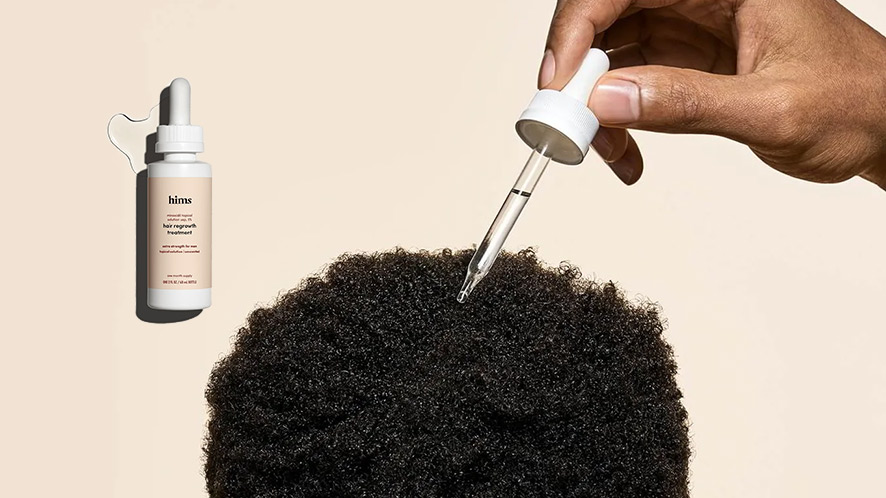
It is also known by the brand name Rogaine. It is a medication that is applied topically to the scalp. It helps increase blood flow and is an inhibitor to DHT, which has miniaturized the follicles and the scalp is having a difficult time receiving essential nutrients. Follicles are rejuvenated and brought back to life. It helps the follicles recover, enlarging the follicles promoting the healthy flow of blood. This can treat hair loss and promote hair growth and treat balding. Hair begins to thicken and the receding hairline eventually begins to disappear. Minoxidil will help increase the hair in the anagen (growing) phase, which is critical to help strengthen and grow the hair long. Studies have shown 7 out of 10 men who have used Minoxidil have seen new hair of regrowth where there was no hair at all.
How To Use
First, wash your hair or area of application clean. Dry the scalp area before applying the Minoxidil. You can apply it on damp hair but the viscosity might be different as you spread it.
Part the hair, and use an applicator to apply the solution. The prescribed dosage is 1ml/ 20 drops.
Before attempting to style the hair, allow the solution to dry completely.
You need at least four months before you can see any results. In fact, the results depend on how much balding you have experienced or how badly damaged your hair follicles are. Make sure to apply twice a day for optimal results. Normally once you start your treatment, you should visit your dermatologist after six months to assess the number of new hairs on the scalp.
Disadvantages
- There could be a possible allergic reaction such as hives, difficulty in breathing, unwanted hair growth on other parts of the face, and possibly the hand (the parts that were in contact with the medication during application).
- Minoxidil should not be used if you have a heart condition. This may cause tachycardia which causes rapid heartbeats and can put your life at risk.
- It might change the color and texture of the hair.
- Minoxidil does not cause permanent regrowth, and you must continuously use Minoxidil to keep the growth. Termination of its use will lead to progressive hair loss within 12 to 24 weeks.
- Minoxidil is less effective if you are completely bald.
2. Finasteride
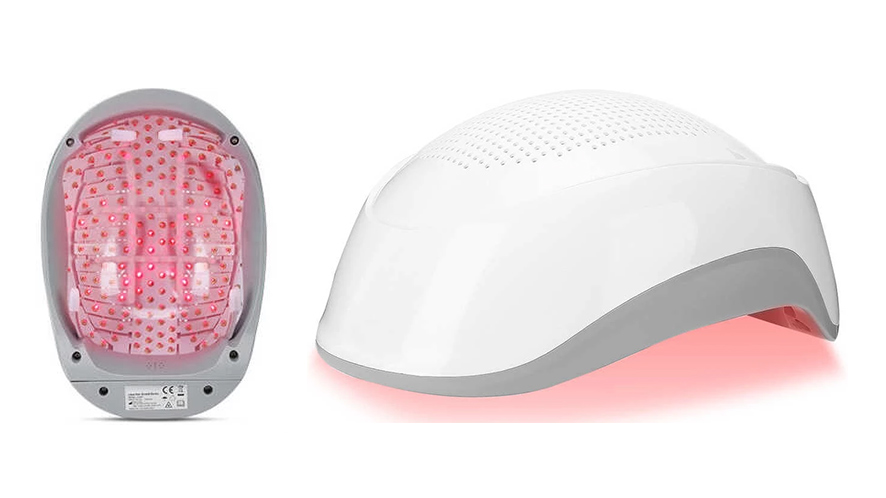
Finasteride is also known as Propecia and can only be used by men. It is another type of non-surgical hair restoration treatment option. It is a prescription medication that your dermatologist can only prescribe. Finasteride plays a significant role in tackling male hair pattern baldness by blocking DHT, which is the root cause of hair loss. Finasteride interferes with the production of excess DHT in the body, resulting in damaged hair follicles recovering and strengthening to stimulate and promote hair growth. How Finasteride works is that it targets the enzyme primarily responsible for DHT production. Blocking the enzyme reduces the amount of DHT in the system by up to 60%. A 2003 study found that 83% of men treated with Finasteride stopped losing hair. Finasteride is cost-friendly, going for between $0.20 to $2.50 a 1 mg. 5 mg is recommended once a day.
Disadvantages
- The benefits of finasteride can only be maintained by long-term use.
- You must commit yourself to a lifetime of medication as finasteride must be taken once a day.
- It takes around 3 to 6 months before one can see any results.
- Unfortunately, just like minoxidil, if you discontinue the treatment, you will experience hair loss and its positive results wear off 8 to 12 months. Finasteride is a DHT inhibitor and not a cure to stop the overproduction of DHT. If you stop taking it, DHT production will increase.
- You should not take finasteride if you are allergic to other medications or have a liver problem. Always consult with your doctor.
Low-level Laser Therary (LLLT)

You have probably heard of laser therapy for hair removal, but did you know laser therapy is also used as a non-surgical hair restoration method to treat hair loss. Low-level laser therapy is slowly becoming very popular as the best non-surgical hair restoration option because it is safe, painless, tolerable, and less invasive in comparison to hair transplant surgery. This laser therapy uses low dosages to administer treatment. Low-level laser therapy is also known as red light therapy, cold laser therapy, bio-stimulating, soft laser, or photobiomodulation.
Low-level laser therapy uses red light and green light to irradiate photons into the scalp tissue. The photons are absorbed by the weak cells in the follicles to encourage the growth and strengthen the hair follicles, increasing the production of active cells and improving how the cell works. A photon is a particle of light which essentially is a particle of electromagnetic radiation. This non-surgical hair restoration is a treatment that revitalizes blood circulation and stimulates the hair follicles to awaken them and encourage the anagen phase. Low-level laser therapy will create cellular energy known as Adenosine Triphosphate (ATP). The outer layer of the skin, the upper dermis will absorb the ATP, which helps heal and promote hair follicle growth. There are two types of low-level laser therapy.
-
Laser Cap
This non-surgical hair restoration method is an approved laser technology with a light flexible cap. It emits red light that gently stimulates the hair follicle causing hair strands to grow thicker, thereby extending the anagen life cycle. The red laser light is non-surgical hair restoration for men that is non-invasive and absorbs specialized cells deep within the hair follicles, providing needed energy to enhance cellular activity, rejuvenate, and promote hair growth. This results in the overall increase of the hair’s appearance as the new hair grows. The hair is fuller and thicker with a noticeable improvement in the quality of hair growth thanks to strengthening hair follicles. It is suitable to use if one is experiencing hair loss and balding at mild and moderate stages. It is used 15 minutes a day, daily in the first few weeks. Continuous treatment is followed with it being used 5 to 10 minutes every two weeks. What makes a laser cap an amazing non-surgical hair restoration option is it can be used at a time. Helmets cost $300-$750.
-
Low-Level Laser
This non-surgical hair restoration for men has been clinically proven to increase hair density, the hair shaft, and diameter by emitting red and green laser light. Works by absorbing the laser into cells resulting in increased cell activity. It is effective in treating people who suffer from male pattern hair baldness. It is done in clinics by doctors and can cost as little as $600 per session. It is administered 2-3 times weekly, and treatments are typically recommended consistent treatment of 8 to 15 minutes exposure to the scalp to emit the light. Clinical studies have proven primary effectiveness showing significant improvement in the overall regrowth of men experiencing male hair pattern baldness from receiving low-level laser therapy.

Benefits of Low-Level Light Therapy
- It is painless, harmless, and a gentle non-surgical hair restoration method.
- It improves the appearance of existing hair by increasing cellular activity in the hair follicles.
- You can opt for a non-surgical hair restoration option at home. It is also affordable at $400-$600 in comparison to hair transplant surgery that can cost up to $25000 or for those who do not want to invest in other non-surgical hair restoration options such as plasma rich platelet therapy.
- It prevents premature development of hair in the catagen phase and increases time in the anagen phase.
Disadvantages
- If you do not have the home option, it can be time-consuming having to have daily visits for several months at the clinic for the laser treatment.
- It is less effective in the late stage of hair loss and balding as it emits gentle stimulation. It is less effective for people in the more advanced stage.
- There are possible adverse effects if there is interaction with certain medications. Low-level lasers should not be performed on people taking photosensitizing medications. Photosensitizing is a chemical alteration to the skin that will increase your sensitivity to light.
- Long-term safety effectiveness has not been established.
- Patience is needed. Results take six months to see any visible progress in the increase in new hair growth.
Scalp Micropigmentation
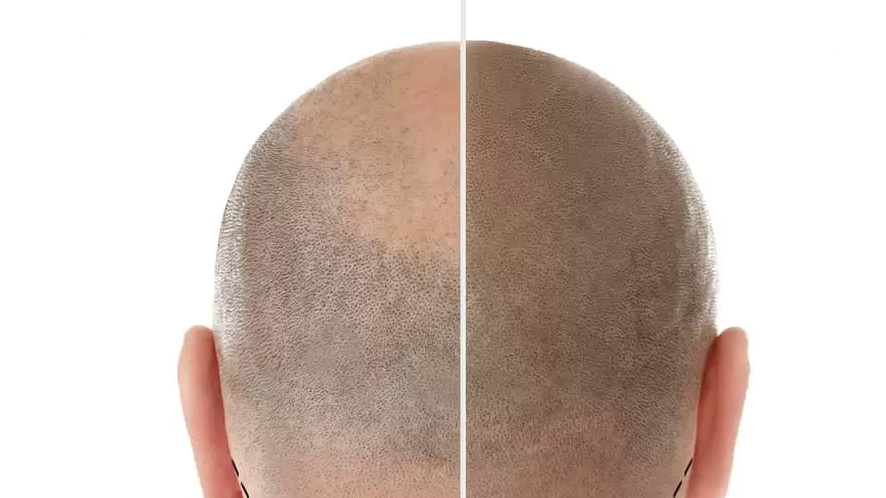
It is a relatively new non-surgical hair restoration method. Scalp micro pigmentation uses small, tattooed dots to create the illusion and give the appearance of thicker hair. This non-surgical hair restoration for men uses scalp micro-pigmentation to conceal, providing coverage where someone is experiencing visible hair balding. A concealer is a fiber or paste frequently applied to the scalp to match the scalp color accurately. Scalp micro-pigmentation uses a tattoo in a stripping pattern dot to apply pigmentation that matches the scalp’s color by mimicking the hair follicles. Scalp micro-pigmentation has slowly shown to be a long-term solution for people who have been unsuccessful with hair transplant surgery or other non-surgical hair restoration for men.
Scalp micro-pigmentation is essentially a tattoo. However, becoming more socially acceptable and due to its non-invasiveness becoming a preferred choice for many. Because the tattoo process has improved with technology, it has been refined and adapted to camouflage scars effectively and give the illusion that one has hair. Tattoos artists accurately create tiny dots placed on the affected area. The dots look very similar to natural hair follicles and will seamlessly blend with the remaining hair on the scalp. Tattoo artists create well-placed tiny dots layered in varying hues of black to mimic hair. It forms shadows that create a natural-looking depth definition. Scalp micro-pigmentation creates hairlike lines aimed to replicate the appearance of natural hair and increased density. Help people with alopecia areata, scarring, or androgenetic alopecia.
Scalp micro-pigmentation treats hair loss by creating the illusion of texture and fullness for your desired results. During your first consultations, you should always have realistic expectations. Scalp micro-pigmentation results rely heavily on
- skin color
- hair color
- the viscosity of pigment used
- the amount of hair present
- the presence and severity of deformities, blemishes, or scars.
During this non-surgical hair restoration for men, a standard tattoo instrument is used to deposit microdroplets of pigment inserted into the skin and the upper layer of the skin. Multiple sessions are recommended.
Benefits of Scalp Micropigmentation
- Results are almost immediate. There are obvious improvements from the first session.
- It is affordable and costs $400 to $600 in comparison to hair transplant or other non-surgical hair restoration for men.
- It only takes 2 to 3 sessions to see optimum results.
- It gives the illusion of density and the appearance of natural hair has regrown.
- It will mask and conceal scars and deformities on the scalp.
- There is no discomfort and non-invasive non-surgical hair restoration for men.
- Lack of maintenance. No special requirement to take care of it.
- It lasts up to 8 years.
Disadvantages
- Scalp micro-pigmentation does not treat hair loss nor does it help treat weakened hair follicles.
- The sessions are often long, up to 8 hours per session. One needs to make time out of a whole day for one treatment.
- You cannot swim between the multiple treatment sessions, no steam or saunas, or hot showers. It is also crucial to avoid direct exposure to the sun the first few days post-treatment.
- It is technically a tattoo and for some, they might not like the idea of getting one just yet.
- Scalp micro-pigmentation is performed by a tattoo artist in conjunction with a dermatologist’s direction. Therefore, results might not be great if not done by a skilled expert.
- If poorly applied or the pigment is mismatched, it will appear unnatural.
- It will change color resulting from ultraviolet light exposure on the pigment through the skin.
- If you have dry skin, the scalp micro-pigmentation will fade quicker.
- Scalp micro-pigmentation is semi-permanent. It lasts up to 8 years and you will need a touch-up as the color may lighten over time.
- Foreign body reactions can take place with the pigment and cause a color change.
- In extreme cases, continuous overexposure to UV rays can completely lose pigment.
Scalp Micropigmentation is Ideal for
- People with donor scars from complications from hair transplant procedures.
- People with scars or deformities on the scalp.
- People who have gone bald from male pattern hair baldness.
- If all other non-surgical hair restoration options such as medication and PRP have been unsuccessful.
- Neurosurgery scars from head trauma.
- People who do not like non-surgical hair replacement systems such as wigs or toupees.
- Experiencing hair thinning and balding.
If you are prone to scalp acne, skin sensitivity like psoriasis, myeloid, scalp micropigmentation should not be performed when experiencing a flare-up.
Non-surgical Hair Replacement
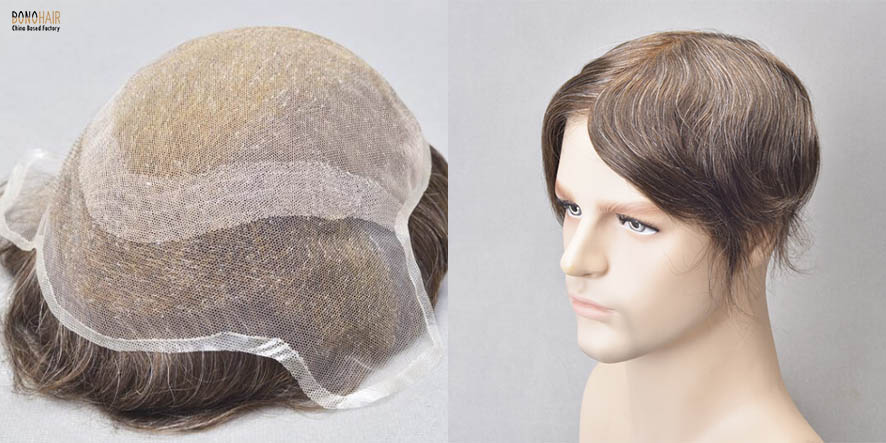
We have discussed in detail non-surgical hair restoration for men. We now want to discuss non-surgical hair replacement systems.
What Is a Non-Surgical Hair Replacement System?
Non-surgical hair replacement systems are currently extremely popular as they have become essential in changing a man’s appearance by concealing hair loss or balding. A non-surgical hair replacement essentially is a toupee or a wig. Non-surgical hair replacement systems are made from either human hair or synthetic hair that covers the area of the scalp that has been affected by balding or hair thinning. The non-surgical hair replacement system can be made from lace, skin, or even a combination of different base materials. The base structure is cut to give the illusion that the hair is growing from the scalp. Research and technology in the toupee industry have come a long way in creating non-surgical hair replacement systems. Toupees are now lightweight, soft, durable, comfortable and improve the appearance of those who have been frustrated and suffering from hair loss.
Non-surgical Hair Restoration VS Non-surgical Hair Replacement System
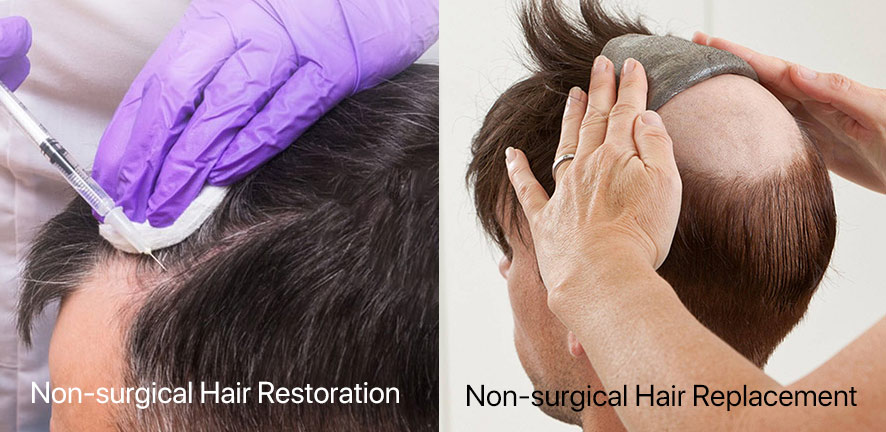
You might be wondering whether you should get non-surgical hair restoration or a non-surgical hair replacement system and we have decided to give you a breakdown below.
- Costs– non-surgical hair replacement systems are more affordable. The range costs $100 to $450. Most non-surgical hair restoration for men goes between $600 to $3,500.
- Immediate results with non-surgical hair replacement. Results are not guaranteed with non-surgical hair restoration options. Additionally to visible results, most have to wait for a minimum of 3 to 6 months and multiple treatments.
- You need to consult with a doctor or dermatologist physically to receive any best non-surgical hair restoration treatments. For purchasing a non-surgical hair replacement system, you do not even have to be physically present when purchasing a toupee. You can simply do it online. In fact, you can simply get your non-surgical hair replacement system from a country that sells high-quality toupees.
- You need to dedicate and take a lot of time to care for your non-surgical hair replacement system or you will damage the toupee. There is no maintenance for non-surgical hair restoration for men.
- Non-surgical hair replacement systems are perfect for concealing hair loss. However, it does not treat or try to stop hair thinning and regrow the hair. Once you take the toupee off your bald spots are still there. Non-surgical hair restoration seeks to treat balding, strengthen and repair damaged hair follicles to reduce hair thinning, and encourage new growth in bald spots.
- Non-surgical hair replacements are for everybody, young, old and it does not matter the extent of the balding or hair thinning. You can even do your hair and you qualify to get a toupee. You need to be assessed for non-surgical hair restoration options if you are a candidate. Also, most non-surgical hair restoration for men mostly treats mild to moderate hair loss.
- A lot of non-surgical hair restoration treatments are relatively new and there are no established studies if they have adverse long-term effects. Toupees have been around for centuries and have zero long-term effects.
- Non-surgical hair replacement systems have to be changed every 2 to 3 months as they have a limited lifespan due to their delicate base material. Non-surgical hair restoration options require multiple treatments to sustain and continue to improve the treated bald spots.
- Non-surgical hair restoration options for men can have adverse side effects that can physically affect your well-being or need to be treated by a doctor. Up to date, there are no side effects caused by wearing a non-surgical hair replacement system.
Conclusion
We hope you now understand the best non-surgical hair restoration options and it is okay if you want to treat it and get your hair thicker as it once was. What is fantastic about non-surgical hair replacement systems is if you choose to get any non-surgical hair restoration done, you can wear a toupee as you wait for your hair to thicken as toupees provide immediate results. You have to be patient as you await new growth to come in which can take 3-6 months, and for those areas to fully catch up with the rest of the other hairs, it will probably take over a year. You should not walk around feeling insecure as you wait for the new growth, so get yourself an affordable high-quality toupee.











